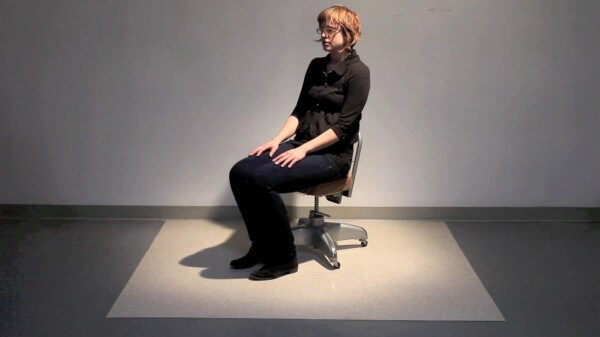Anja Ulfeldt : Sound Specific


Anja Ulfeldt’s work is meditative, highly sensory, and captivating. Her sculptures and installations focus on the mechanics of sound. FRONTRUNNER interviewed her this past month.
Dimensions of Cognition is a fascinating mix of design, performance, and multi-sensory interactivity. What is the process of choosing materials based on these experiences? Is design a product of the material or the sound an initial inspiration? This installation has a very intriguing relationship with the viewer as listener.
I’m a person who has an intricate relationship with my auditory environment. I’m always thinking “what is that sound?” “Where is that coming from?” I have to satisfy my curiosity. Listening is an evolutionary development for survival. At the same time, living in an urban environment there is simply too much noise to consciously process. I’m interested in the way the brain processes information on a conscious as well as a subconscious level. I love the stainless steel sink for its unassuming demeanor and visible physical history. Within this series I feel like sound and material play off of each other. The objects I look for are iconic yet non-specific. They’re well used and imperfect. In the case of Dimensions of Cognition I was looking to evoke a very specific kind of moment. The amplified sound of a live dripping sink is a constant reminder of the fixture’s perpetual state of disrepair. The object appears to be inconsolable, demanding our urgent attention and reminding us that we are of a physical world.
With my current work in progress, Street Lamp, I have become even more engaged in the act of listening. The piece incorporates live streaming sound from my neighborhood in Oakland. I live right by a freeway exit and just off a busy street. The microphones pick up traffic, human activity and industrial noise. This is not intended to be a form of surveillance but rather an exercise in listening. The way the microphones are set up in combination with the constant noise level of the freeway traffic creates a rich and layered blend of sound. Eavesdropping is quite impossible and instead I end up with something that resembles brown noise with recognizable sounds coming to the forefront of my attention and then melting away. The ability to remotely listen to my block has made this work come to life for me. Somehow I can be in two places at once even though they couldn’t be more different. After listening for an extended duration I can pick out many of the individual ambient sounds of home.
I am interested in your use and repurposing of found/salvaged objects and the focus on distinct sounds captured by the objects such as Chair for Provocation. The sounds that the chair makes are presented in a video with each separated cleanly. The editing and video allow for a certain fictional quality. Does the control shown in the video rule out interactivity by a gallery visitor?
Seeing this work documented on video can be misleading because I think viewers assume that a soundtrack has been created. The Chairs for Provocation series was created with the intent of cutting out unnecessary mediation. What you hear in the video documentation is very much like what you hear when you sit down in one of the chairs. Anyone can perform and the sound has not been pre recorded. The audio is created live as a contact microphone picks up the actual creaks and groans of a well-used object. A slight raise in the volume of the interaction between human and furniture allows the situation to shift from subtle to absurd.
Obstacles is interactive at its core. You have a background in photography and are director of Basement Gallery Oakland. How does natural variation and user experience play a part in your work? Do you think differently about interaction having organized art shows and watched how visitors interact with work?
Yes, experience certainly helps. That said, it is nearly impossible to predict how the public will explore an interactive artwork. For me this is the exciting part. The idea that every visitor’s experience will be unique and there is potential for infinite variation. Obstacles is a great example of how each participant brings their own personality to the experience and ultimately completes the work.
Ice Brain plays with time and the natural (or artificial) process of freezing. The brain-like form goes through a three-day life cycle. This process is sped up for the camera. Tell me the story behind this piece and where it was shown. Where did you find the materials and what was the engineering of a piece like this?
Ice Brain developed out of my fascination with the ephemeral. It was the finite existence of ice sculpture, always slipping away, that attracted me to ice as a medium. I had heard of Icehotel in Jukkasjärvi, Sweden, which is built by artists in residence every winter and then melts each spring. After some investigation I became determined to work with ice. The problem was that I did not live above the Arctic Circle and my freezer was just not that big so I decided I would need internal refrigeration. I looked at the way ice rinks work, I considered using Peltier coolers and looked into domestic refrigeration. I eventually decided to go to Los Angeles and work with my Uncle, John Ulfeldt, a commercial refrigeration expert to do some experiments in his garage using a commercial air dryer that a client had thrown out. This investigation eventually led to Ice Brain, a self-forming ice sculpture that is now part of the collection at the Exploratorium museum in San Francisco.









Responses